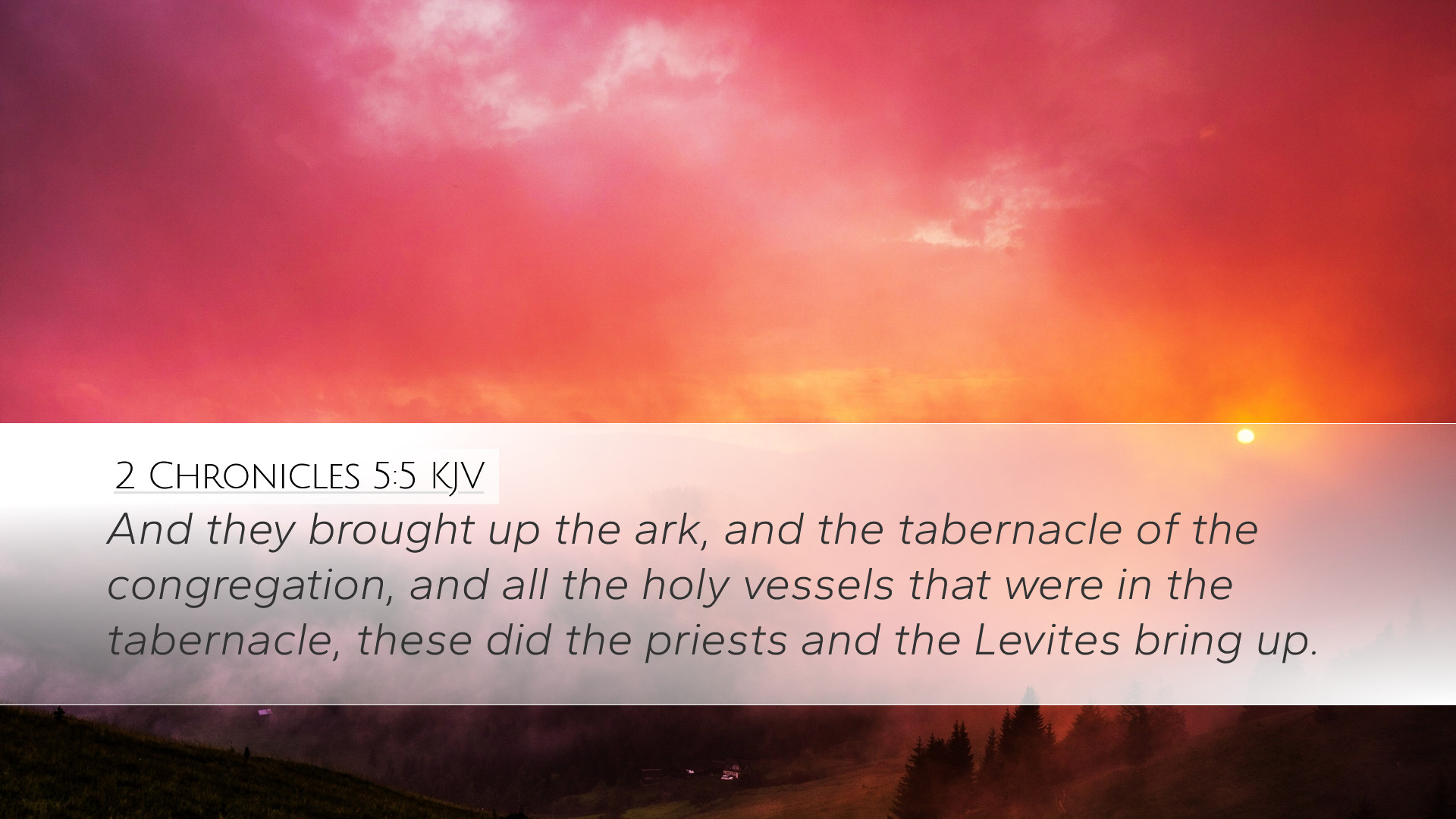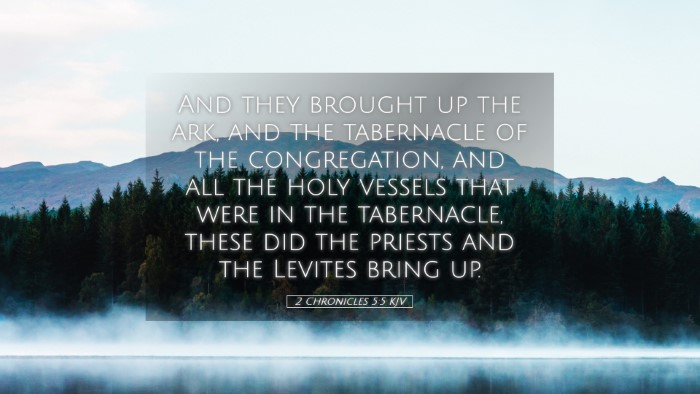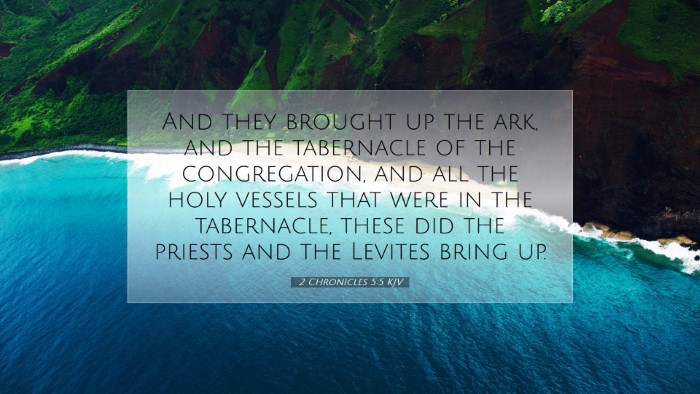Commentary on 2 Chronicles 5:5
Verse Context: 2 Chronicles 5:5 states, "And they brought up the ark, and the tabernacle of the congregation, and all the holy vessels that were in the tabernacle: these did the priests and the Levites bring up." This verse is situated within the larger narrative of Solomon's Temple dedication and signifies a pivotal moment in the transition from the portable Tabernacle to the established Temple in Jerusalem.
Significance of the Ark of the Covenant
The Ark of the Covenant represents God’s presence among His people. Matthew Henry elucidates that bringing up the ark was a ceremonial act that connected to the covenant that God made with Israel. It symbolizes both God's faithfulness and Israel's calling. The ark held the tablets of the Law, and this act demonstrated reverence towards the divine commandments.
The Role of the Priests and Levites
In this passage, special attention is given to the roles of the priests and Levites. Albert Barnes comments that these individuals held a crucial position in conducting the worship of God and were responsible for the sanctity of the sacred objects. Their involvement in transporting the ark underscores the importance of proper priestly conduct in worship. The fact that they brought up not only the ark but also the tabernacle and its vessels highlights the continuity of worship and the significance of sacredness in the relationship between God and His people.
Priestly Duties
- Care for Holy Things: The priests and Levites were entrusted with the care of the holy objects, which symbolizes their spiritual responsibility. Adam Clarke suggests that the rigorous attention given to these tasks reflects the seriousness with which God desires His worship to be conducted.
- Role in Public Worship: Their actions not only refer to personal sanctity but also to community worship, indicating how essential it is for the leaders of the faith to exemplify holiness.
The Transition to the Temple Worship
2 Chronicles 5:5 represents the critical transition from the old patterns of worship to a more formalized structure within the newly constructed Temple. It signifies a moment of fulfillment in God's promise to establish a place for His name. As commented by Henry, this marks the end of an era of transient worship and the beginning of a central place where God's people can gather in His name.
Theological Implications
- Covenant Faithfulness: The act of bringing the Ark to the Temple encapsulates the fulfillment of God's promises, reinforcing His covenant with Israel. This is a reflection of God's steadfast presence and a reminder of the obligations of worshippers to honor their commitments to God.
- Worship Purity: The purity of worship in transporting and housing the Ark speaks to the theological stance that God desires His people to approach Him with reverence and intentionality, a theme echoed throughout Scripture.
The Collective Nature of Worship
Moreover, this verse stresses the communal aspect of worship. The collective action of the priests and Levites in bringing the ark represents the whole nation’s need for atonement, guidance, and worship. Barnes notes that true worship should not be an individual endeavor but a community act, drawing people together in a holy assembly.
Lessons for Today
- Importance of Community: Modern congregations must recognize the value of collective worship as an expression of faith. The shared burden of transporting the Ark serves as a reminder to uphold one another in spiritual matters.
- Commitment to Honor God: Today’s worship leaders should remember the significance of their roles and strive to maintain the holiness and integrity required in leading others in worship.
Conclusion
In conclusion, 2 Chronicles 5:5 offers deep insights into the nature of worship, the significance of the sacrificial roles of priests and Levites, and the commitment of covenantal faithfulness. As reflected in the interpretations of Matthew Henry, Albert Barnes, and Adam Clarke, this passage provides a rich foundation for understanding God’s desire for His people to approach Him in holiness and order as they embrace both their individual and communal responsibilities in worship.


